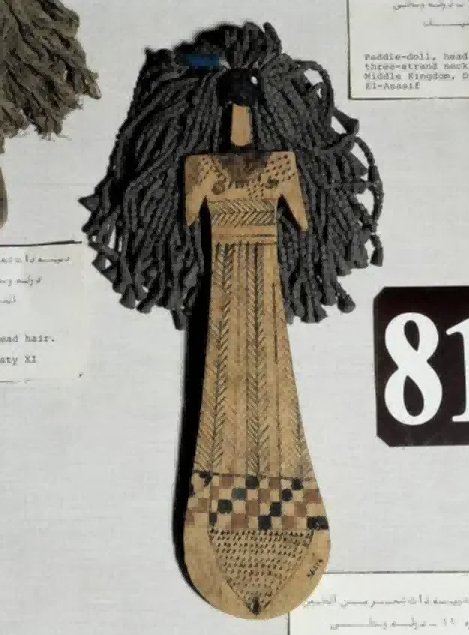What treasures are hidden in an artist’s studio? This exhibition allows you to explore the "back kitchen" of 28 artists
What does a studio mean to an artist? Some people say it looks like a kitchen, while others say it looks like a delivery room.
For the viewer, the studio is a secret passage into the artist's soul.
Walking into the exhibition hall of Shanghai Shanghai Art Museum is like walking into this passage. The exhibition "Today's Sea - Shanghai Artists' Studios" invited 28 of Shanghai's most representative contemporary artists to participate in the exhibition with nearly 120 works.
The audience can not only see their works, but also get a glimpse of their studios and feel where their inspirations flow.
Not all artists want others to peek into their studios.
The studio is a place where they explore themselves, inspire themselves, achieve themselves, and sometimes even fight against themselves.
The exhibition "Today's Sea - Shanghai Artists' Studios" actually revealed the works and studios of 28 artists to the audience at once.
Entering the exhibition hall, you will see a whole wall of artistic creation scenes composed of more than 150 black and white photos. These photos record 28 artists working hard in their studios and their personalized creative spaces.
The photo was taken by Chen Yi, one of the curators of this exhibition and executive deputy director of Shanghai Shanghai Art Museum. "Although these artists are all my teachers or close friends, it was my first time to go to most of their studios. When I raised the camera, I tried to capture the atmosphere of the studio through the lens and use the aesthetics of a painter. When I watched and explored their creative inspiration, I felt their enthusiasm, love and enthusiasm," Chen Yi told reporters.
What’s even more interesting is that each artist carefully selected an old object related to his studio and artistic creation, such as a brush, easel, sculpture stand, paint box, chair, stone... These old objects are their old friends. They are their witnesses, silently telling unknown stories.
Chen Yi, executive deputy director of Shanghai Shanghai Art Museum, went to the studios of 28 artists to take photos one by one, and had in-depth exchanges with the artists.
Zeng Chenggang, Chairman of the Shanghai Artists Association, Dean of the Shanghai Academy of Fine Arts of Shanghai University, Professor of the Academy of Fine Arts of Tsinghua University, and President of the Chinese Sculpture Society, not only presented many of his sculptures in this exhibition, but also brought his loyal partners to the audience ——Sculpture workbench.
In the winter of 2000, not long after Zeng Chenggang arrived at Tsinghua Academy of Fine Arts, he moved his studio into the boiler workshop of a factory in Dabeiyao. Next to the boiler workshop, he happened to see an abandoned stamping machine and thought it would be great if it could be transformed into a sculpture workbench. So, he found the person in charge of the factory and asked for the abandoned stamping machine. With joy and respect, he began studying the structure and thinking about how he could transform it into a functional sculptural workbench.
The subsequent cutting and transformation process was difficult, but also full of fun. This workbench has never left Zeng Chenggang until now. "It is my good partner and has helped me complete many sculptures. It silently carries the traces of the years and has witnessed countless moments of concentration and perseverance. It is engraved with the imprint of time and seems to tell the story of the relationship between me and the work. A story." Zeng Chenggang wrote on the wall of the exhibition hall.
Sculptor Zeng Chenggang’s works and his sculpture stand
Jiang Tieli, a sculptor and professor at the Shanghai Academy of Fine Arts of Shanghai University, also brought a sculpture table from the studio. In his opinion, if the significance of the sculpture stand to a sculptor is limited to work, it would be too plain. "To me, the sculpture table is more like the owner of that space."
Sculptor Yang Dongbai brought the iron stand and hammer from his studio to the audience, which are indispensable tools for forging metal works. "They aim at one corner, forming a dedicated space, beating and tempering. Years of tempering have prompted me to reflect on the behavior of art, thinking from the role and reaction to stimulate the dialectics of creation, changing from deliberation to expansion, from fine deformation to free blooming "Yang Dongbai said, "They exert pressure on the metal blank, allowing me to cast artistic free will into my thinking."
The easel left by the painter Chen Yifei to his younger brother Chen Yiming
An easel with a sense of age is placed next to the oil paintings of painter Chen Yiming.
More than 40 years ago, Chen Yiming's brother Chen Yifei began using this easel while working in New York. Chen Yifei likes this easel made in Italy very much. Many of his representative oil paintings in his life were born on this spiritual easel.
In 2002, Chen Yiming followed his brother's call and returned to Shanghai to settle down. "My brother gave me his beloved easel. After my brother passed away, this easel was the best legacy he left to me. I have always cherished it very much." For Chen Yiming, the easel is like a powerful spiritual pillar, giving him inspiration. and strength, it carries the close brotherhood and their common pursuit and persistence of art.
The ink dots painted by Wang Jieyin, a professor at the Shanghai Academy of Fine Arts of Shanghai University, are light and elegant, with profound meaning. The dots and surfaces in "Birds of the Forest" reveal wisdom and chicness.
His old thing is a chair, a chair he picked up from the Cultural Square many years ago. "This is a very interesting chair. It was thrown on the roadside at that time. I thought it was very good, so I took it back and painted a few strokes on it. This chair has always followed me, no matter how many times I moved it. studio, it’s all there.”
In Wang Jieyin’s view, “Paintings are both my rivals and my close friends. Sometimes, my paintings and I duel one-on-one, and sometimes we have long conversations like friends. Many works are a duel between sleep and food, day and night. It was gradually perfected through 'heart-to-heart talks', and the studio witnessed every 'duel' and 'heart-to-heart talk'."
Mao Donghua, deputy dean of the Shanghai Academy of Fine Arts of Shanghai University, also brought a chair with a classical feel. "I have a pair of chairs like this at home, my father and I each have one. Although it is Ming style, it is not a very good wood, but it is strong enough and has a high usage rate. I sit on it to watch the pictures and stand on it to move around. There is a sense of security in every image, which has helped me complete many works.”
The famous painter Qiu Ruimin brought an old palette with various colors of paint solidified on it.
In the past, every time he finished an oil painting, he would scrape the paint off the palette for next use. Gradually, Qiu Ruimin's painting style became more expressive, and more and more paint was squeezed onto the palette, and the paint on the board became thicker and thicker. Sometimes, he would apply paint directly to the canvas to mix colors. The messy paints on the palette accumulated more and more, and when it became too thick, he had to replace it with a new one.
Once, a friend visited Qiu Ruimin's studio and saw the old palette he had used. He asked him to sign on the board and wanted to take it back to make a frame and hang it on the wall for viewing. From then on, Qiu Ruimin no longer threw away old palettes. He said: "It is very meaningful to preserve these old palettes. They have witnessed a period of my career in oil painting."
The color palette of Xi Axing, the former art director of Children's Publishing House, is very special. In his childhood, he loved to paint watercolors and often went out to sketch. It was inconvenient to use a dish to mix colors outside. He really wanted to have a color palette box, but he couldn't buy one at the time, so he had to make his own. So he found two wooden boards, installed hinges on them, and then started carving them for several days. This homemade palette box is light and small. It is easy to carry when you go out to sketch, and it is also very painterly. Xi Axing said: "Childhood is something I will never forget. For nearly 70 years, this homemade palette has been my treasure and my childhood dream."
Painter Qu Fengguo's abstract work "Four Seasons" is very recognizable. He placed the long ruler in his studio on the side, forming a certain echo with the lines in his work.
"I unscrewed the paint, held up the long ruler, walked from left to right, painted along the edge of the ruler, put it down, and waited. Then I picked up the scraper, walked from right to left, scraped it smooth, and continued walking, back and forth. ...One minute, one hour, one day, the seasons change." Qu Fengguo said about his creative process, "The paint produces accidental colors and mottled changes during the scratching process, which makes me unexpected and excited. I am also full of expectations. I regard it as human destiny. Is there also necessity in chance? ”
Li Lei, director of Shanghai Shanghai Art Museum and professor of painting at the Department of Stage Art at Shanghai Theater Academy, places several empty paint bottles from his studio next to his paintings. He said this is where he hides his soul.
Next to the work of painter Zhang Peicheng, an extra-long brush is placed. He told reporters that since he had a big studio, he wanted to paint some big paintings. "When I draw, I like to hold the brush and swipe it directly. I can't take into account the whole thing when I stick it to the paper, so I thought of customizing an extra-long brush to use when I start laying out."
Pang Fei, a painter from the Shanghai Chinese Painting Academy, uses unique details to express his understanding of tradition and contemporary understanding in his ink paintings. Pang Fei has many hobbies. He likes to collect stones, seals, ancient paintings and various miscellaneous items. Walking into his studio is like entering a cornucopia of collectibles. The old object Pang Fei brought from the studio was a stone. In his opinion, appreciating stones means appreciating oneself. When Chinese people appreciate stones, they actually observe themselves: wrinkles, thinness, transparency, and leakage all contain the flavor of life of Chinese literati. Wrinkles represent vicissitudes of life, thinness represents character, transparency represents broad-mindedness, and leakage represents gains and losses. A small stubborn stone, the Tao is at ease. With stones, literati can realize that we are not alone in this world.
Painter Huang Yuanqing's old object also seems not to be directly related to artistic creation - a hoe given by a friend more than ten years ago. "This is an ordinary farm tool, but its shape and lines, as well as the changes and flows in the middle, can make people feel the craftsman's intention." Huang Yuanqing said.
Painter Yu Xingze's old object is a jar of small steel balls. From 2007 to 2013, his paintings used steel balls as the core, deeply exploring its inner symbolism and philosophy. These steel balls are not only the main body of the picture, but also the projection of his inner world.
The 28 artists are all very unique, and their artworks, studio snapshots, and unique old objects make up such an intriguing exhibition.
"The studio is a place for artists to explore themselves, inspire themselves, and achieve themselves. In every studio, there are almost unfinished works, which seem to be waiting for their opportunity - days, months, or even years." According to Zhu Guorong, one of the curators of this exhibition, the work can only represent one aspect of the artist. Only by entering the artist's studio can we understand the artist more comprehensively.
Li Lei, director of the Shanghai Shanghai Art Museum, said, "Shanghai style is a cultural phenomenon, an attitude and a possibility. Shanghai style art not only inherits tradition, but also has an openness blown by the sea breeze, and has its own cultural logic and vision. Logic. There seems to be no qualitative or quantitative description of what the art ecology of Shanghai is like today. We chose such a small cut for our exhibition, hoping to reflect the art ecology of Shanghai today through the artist's studio. We will continue to hold this series of exhibitions,” Li Lei said.




